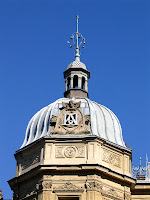Local agricultural fairs are important events in France, a country where one of the most famous sayings is: "Pâturage et labourage sont les deux mamelles de la France."
Type that into the Google linguistics tool and out will pop a non-literal translation: "Tilling and grazing are the two mainstays of France."
It was Henri IV's brillant finance minister, Sully (1559-1641), who first pronounced the often-cited phrase which reads in its complete form, "Pâturage et labourage sont les deux mamelles dont la France est alimentée, les vraies mines et trésors du Pérou."
 Realizing the importance of agriculture to the wealth and power of France, Sully adopted numerous measures to improve conditions for farmers. Thanks to him livestock and farm tools could no longer be seized for payment of debts, new roads were built and others repaired, canals were constructed, communications improved, free-trading of grains was established and numerous tolls abolished between provinces to facilitate agricultural commerce.
Realizing the importance of agriculture to the wealth and power of France, Sully adopted numerous measures to improve conditions for farmers. Thanks to him livestock and farm tools could no longer be seized for payment of debts, new roads were built and others repaired, canals were constructed, communications improved, free-trading of grains was established and numerous tolls abolished between provinces to facilitate agricultural commerce.A foresighted individual.
Vocabulary lesson
le pâturage: grazing, pasturage
le labourage: tilling, plowing
la mamelle: teat, breast































